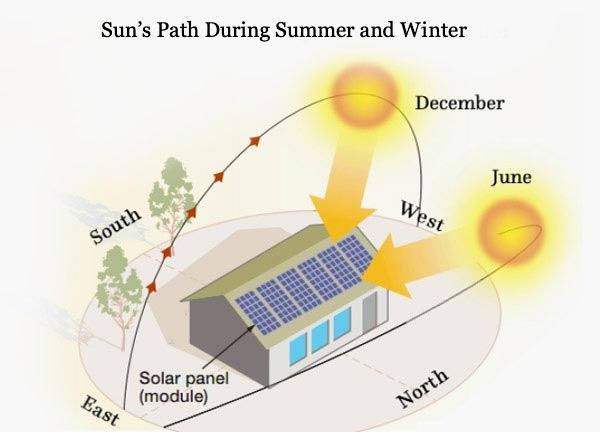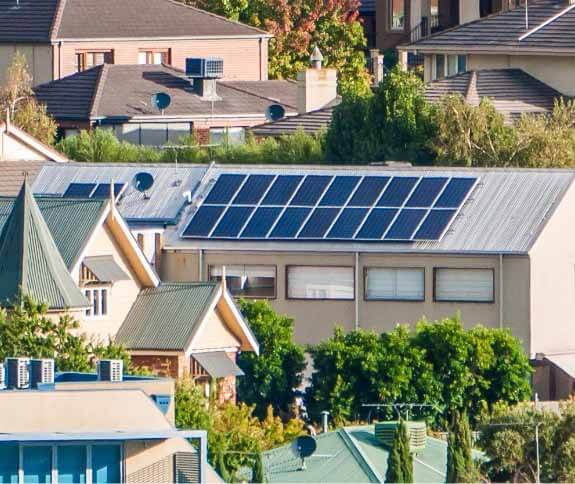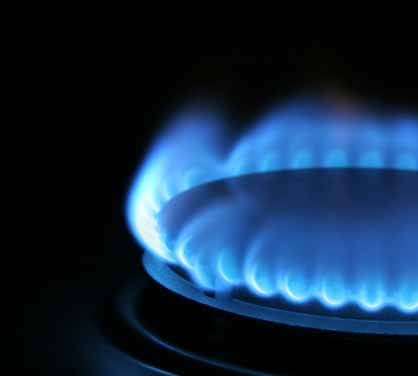When looking into solar as a way to reduce your reliance on the grid and energy bills, you’ll want to get the best out of the the system and maximise the energy output of the panels. To be able to do this there are a few factors to consider before installing solar that’ll impact the amount of energy your system will generate.
Things to consider include; Solar Panel Positioning and Your Roof Direction, Your Energy Habits and whether you are Building, Purchasing or Renting.
Solar panel positioning and roof direction
The position and direction of your solar panels can affect how much sunlight they’ll receive and therefore how much energy is generated for your use. First off, avoid having your Solar Panels installed where it could get shaded throughout the day. E.g. near large trees.
If shaded areas are unavoidable, micro-inverters may be a great option for you to discuss with an installer when enquiring about quotes. If your roof allows for a combination of panels placed facing different directions, you can maximise the suns movements throughout the day.

North facing panels
In Australia North facing panels receive the most sun throughout the day.
If North facing panels aren’t an option on your roof it’s not a deal breaker!
You can choose other panel directions based on your high energy consumption times.
East facing panels
Generates more energy in the morning and less in the afternoon (12% less energy than North facing).
West facing panels
Generates less energy in the morning but more in the afternoon (12% less energy than North facing).
South facing panels
Avoid where possible as south facing panels can generate up to 28% less energy than North.
Your energy habits
To maximise your potential solar savings those installing solar will need to adjust their energy habits and shift the majority of their energy usage to during daylight hours, whilst the solar panels are generating energy. See below on ways you can do this as well as other tips that will assist in maximising your solar savings.
Get on top of your appliance use
Use more energy during daylight hours, whilst your solar panels are generating energy by:
- Using rechargeable appliances so you can charge during the day and use at night e.g. cordless vacuum
- Setting timers on appliances, so they run during the day e.g. washing machine
- Having less appliances on at the same time e.g. run the dishwasher after the washing machine has finished
- Turning appliances off at the wall when not in use, as the standby mode still uses energy
- Wash clothes in cold water
- Check the seal on your fridge door, if its faulty your fridge will be using more energy to stay cool
Lighting
Switching to LED lighting in your home, and sensor lights outside
Cooking
Investing in a slow cooker! Not only will you make some delicious dishes, but you will be optimising the energy during the day and avoiding the use of an electric stove, which are high energy consuming!
Heating and cooling
- Air conditioner and heater- while the suns still out, set your aircon or heater on timers, to bring your home to your desired temperature and then switch it off at night
- Use fans instead of air conditioning
- Check your windows and door seals- if they are faulty your homes air temperature will change, and you’ll find yourself reaching for the air conditioner or heating remote again
Invest in a solar battery
A solar battery is an additional battery component to a solar system that becomes charged from solar panels. This battery then stores that charge to be used later. The stored power can be used when a homes’ solar panels are no longer generating energy – in other words the sun is not out
Other handy tips
- Insulate your home
- Do an energy audit to see where your high energy use is coming from, so you can better manage your consumption
Are you building, moving or renting?
If you’re in the stages of building, it is a good idea to start planning your solar installation before the completion of your home. For quotes to be tailored to your property, Solar Providers will generally need to view and assess the roof of your household.
Less than 3 months to completion
If you’re less than 3 months away from your roof being completed, solar providers will be able to provide you with accurate quotes if you can supply the following information;
- Roof space
- Roof orientation
- Potential obstacles or shade restrictions (large trees)
- Household size
More than 3 months to completion
If your home is more than 3 months from completion, not to worry! Complete our quote request form and we will be in touch with you in a few months to kick start your solar planning.
Whether you’re preparing to move into your first house, move into a new house or buy an investment property, solar can be a hugely valuable addition to the property and assist in greatly reducing your power bills. To ensure the process runs smoothly and to provide the most accurate quotes, solar providers will require you to be moving in or obtaining ownership of the property within 3 weeks, before supplying quotes.
If the property you are purchasing has an existing system that you are wanting to upgrade, expand on or add a battery storage component to, suppliers will require access to the roof, the system, original warranty and paperwork of the current system, if possible, before providing an accurate quote.
More than 3 weeks away from moving in or obtaining ownership
If you’re more than 3 weeks away from moving in or obtaining ownership, not to worry! Complete our quote request form and we will be in touch with you in a few months to kickstart your solar planning.
For renters who are wanting the benefits of solar energy, the first step is expressing your interest with your landlord. Switching to solar energy is a mutually beneficial upgrade for renters and property owners.
A landlord that is not able to or not interested in paying for the cost of a solar system, may want to consider a Power Purchase Agreement (PPA). A PPA allows a third-party installer to pay and install a solar system at a property, under the approval of the property owner. The property then acts as a host for the solar system and will produce the energy for the tenant/renter to use. The energy used will be sold to the renter/tenant by the third-party installer at a fixed and reduced rate, in comparison to the grid.











